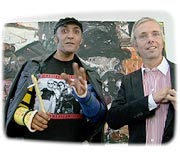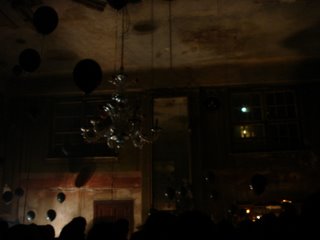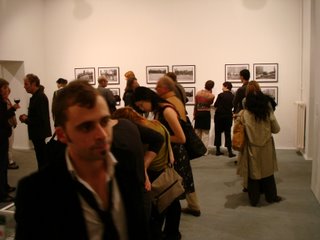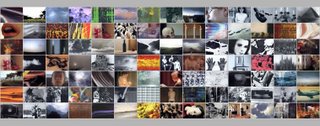THE TRUTH OF THE MATTER | ||
| ||
LUC TUYMANS, | ||
| ||
With Tuymans we jump from endgame to postgame wrap-up, a commentary on the | ||
| ||
This is why we shouldn't expect or require an individual masterpiece from Tuymans. |
Thursday, September 21, 2006
Luc Tuymans
Wednesday, September 20, 2006
Gerhard Richter
Sunday, September 17, 2006
Armen Eloyan


Watch the new show of Armen Eloyan here: http://vernissage.tv/blog/2006/09/07/armen-eloyan-comic-related-paintings-bob-van-orsouw/
I don´t want to guess how he broke two arms at once....
Altough smoking like that ... very classy Armen!!!!!!!!!
Wednesday, September 06, 2006
NEW FIELDS OF ARCHITECTURE: ZAHA HADID
Tuesday, September 05, 2006
Opening Martin Eder





Martin Eder opened a show with new works at the Eigen + Art Gallery Berlin.
Although the works weren´t that great in my opinion, it was absolutely an art event and later in the evening the artist played with his trashy night club band in the beautifull ballhaus, wich was absolutely brilliant.
It was amazing how many art victims etc. turned up for just two openings in Auguststrasse.
There was a show at KW and the one above.
KW i don´t have photographs of, sorry.
Art=Hip here in Berlin.
Saturday, September 02, 2006
season of openings has started




Well summervacation is kind of over. The first real opening in months took place at the Kunstraum Kreuzberg/Bethanien yesterday. I had the feeling that this overwelming crowded happening took some ajustments from my part, but it was very nice to see our friends Susanne and Sasha again. The exhibition: How to do things...in the middle of (no)where included work by Sasha (real name Alexander Komarov wich is shown on the photographs, he made a kind of paralel between a prisoner or prison life and the way an artist moves in his studio, i don´t do him justice with this very short description of his work wich includes many more layers but i have to be off and running to the next opening today of Martin Eder wich will probebly feature here tomorrow.
Subscribe to:
Posts (Atom)







